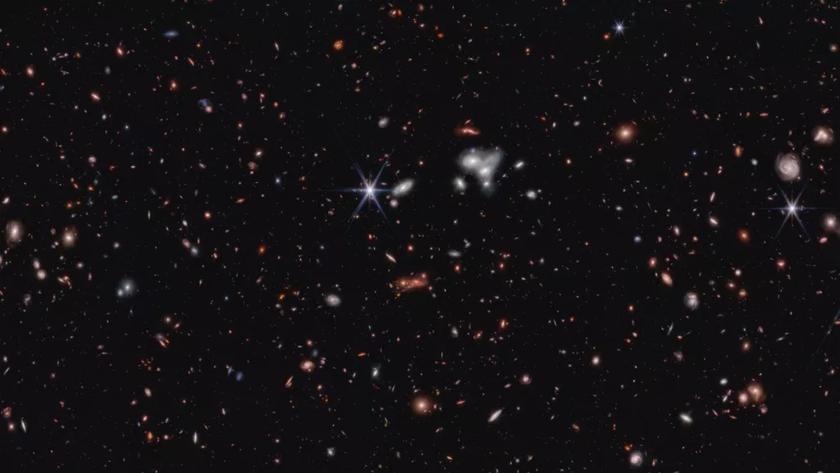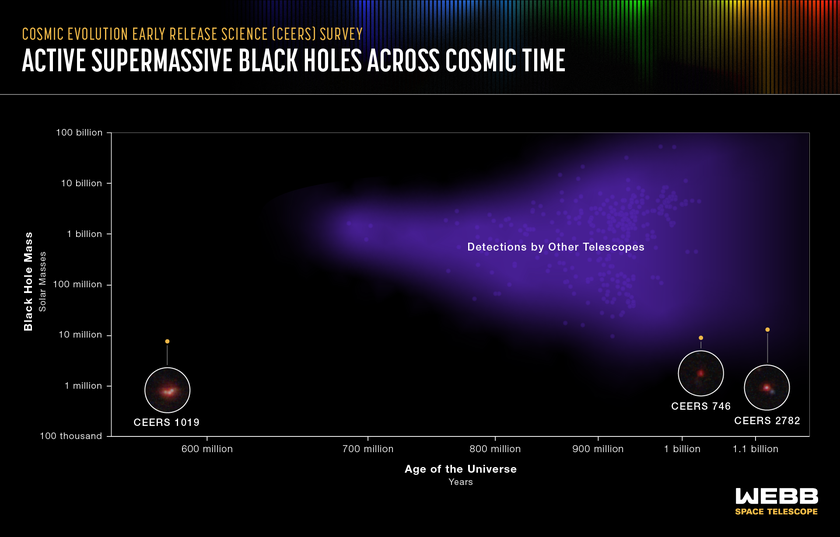
Scientists have discovered the oldest and most distant supermassive black hole to date. The James Webb Space Telescope helped them with this, Space writes.
What is known
A supermassive black hole lies in the center of the CEERS 1019 galaxy. It appeared only 570 million years after the Big Bang. The difficulty in detecting the object is due to the fact that it is only 9 million times more massive than the Sun. Despite the fact that the supermassive double hole is relatively small, its existence at such an early stage of the Universe’s development is a mystery to scientists.
The object was discovered as part of the Cosmic Evolution Early Release Science (CEERS) program. The project aims to test methods that will allow scientists to look far into the past of the Universe.

James Webb saw two more objects. As it turned out, these are the nuclei of galaxies CEERS 746 and CEERS 2782. They appeared 1 billion and 1.1 billion years after the Big Bang. Each black hole is about 10 million times more massive than the Sun. For comparison, Sagittarius A* in the center of the Milky Way has a mass of 4.3 million suns.

